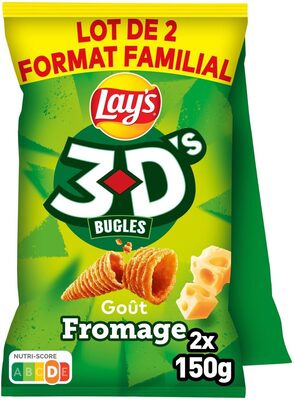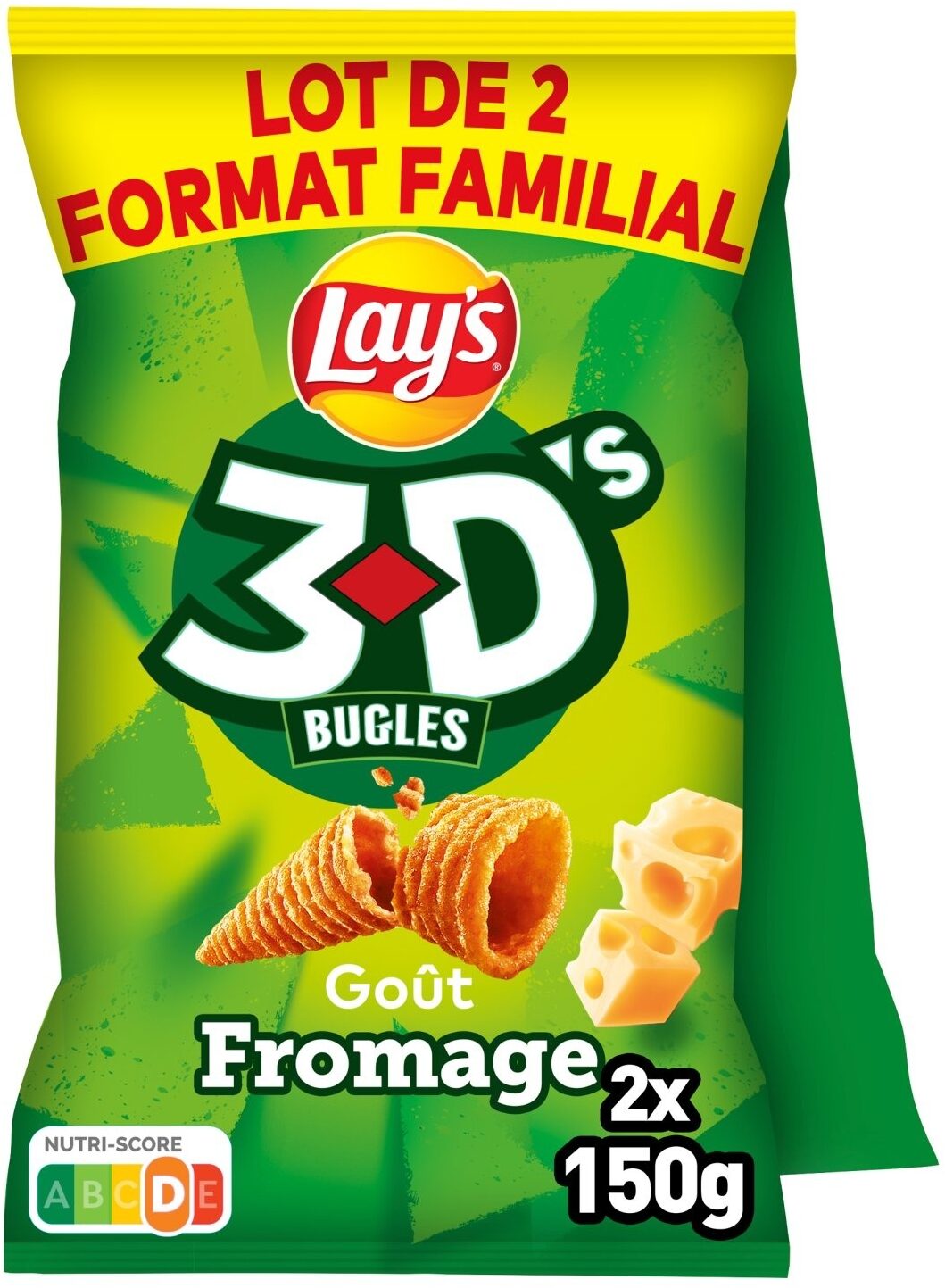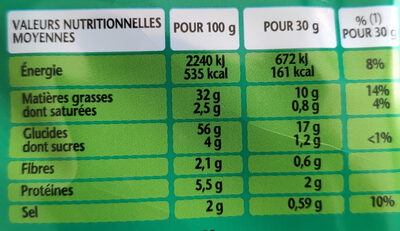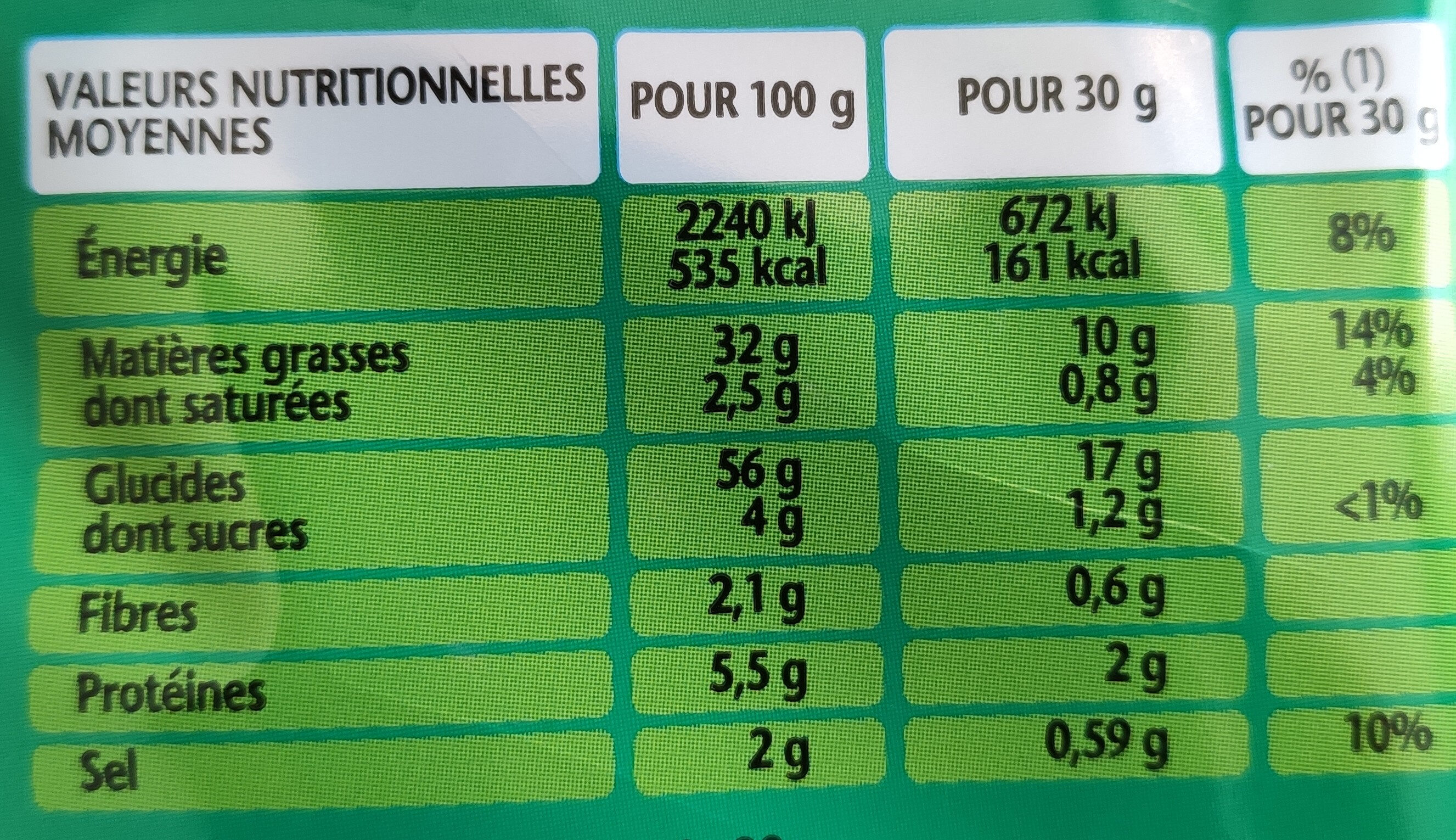3D Bugles Goût Fromage - BÉNENUTS - 300 g
This product page is not complete. You can help to complete it by editing it and adding more data from the photos we have, or by taking more photos using the app for Android or iPhone/iPad. Thank you!
×
Some of the data for this product has been provided directly by the manufacturer PEPSICO FRANCE.
Barcode: 3168930007197 (EAN / EAN-13)
Common name: Produit soufflé à base de maïs goût fromage
Quantity: 300 g
Categories: Snacks, Salty snacks, Appetizers, Crackers, Puffed salty snacks, Puffed salty snacks made from maize, fr:Biscuits-aperitif-souffles-au-fromage
Labels, certifications, awards:
Green Dot, Nutriscore, Nutriscore Grade D
Countries where sold: France
Matching with your preferences
Environment
Carbon footprint
Packaging
Transportation
Other information
Preparation: A consommer sans préparation
Conservation conditions: À conserver à l'abri de la chaleur et de l'humidité
Customer service: PepsiCo France, 15 boulevard Charles de Gaulle 92705 Colombes CEDEX
Report a problem
Data sources
The manufacturer PEPSICO FRANCE uses Equadis to automatically transmit data and photos for its products.
Manufacturers can use the Open Food Facts free plaform for producers to access and complete this data, and to obtain reports, analysis and product improvements opportunities (e.g. better Nutri-Score).
Product added on by serelion
Last edit of product page on by inf.
Product page also edited by asmoth, brieuc, date-limite-app, kiliweb, openfoodfacts-contributors, org-pepsico-france, packbot, quechoisir, roboto-app, tacite-mass-editor, yuka.sY2b0xO6T85zoF3NwEKvlhxnDdX1qBP-aAT4uRC52fSMD7DCc9wjyI_5FKs, yuka.sY2b0xO6T85zoF3NwEKvlklFA8XjnRvZbCHSiUKZ9_jVIYTzX_NU2tPbFKs.











